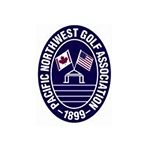Handicap Hub: WHS Refresher Course - Part II
By Kelly Neely, Sr. Dir., Handicapping & Course Rating
Click Here for Handicap Hub Archives
I hate to be dramatic (us handicapping folk try not to indulge in such emotions, though frequently failing) but was it really just last month that we went through a WHS Refresher Course highlighting our favorite duo, Net Double Bogey and Hole-by-Hole score posting? It seems like a lifetime ago as I’m pretty sure I was younger, less gray, and my eyesight was not quite as bleary (thank goodness for a hairstylist and optometrist of considerable skill. It’s a shame I can’t hire anyone to take care of the first problem). Endless emails regarding the USGA’s Digital Profile feature have come and gone and at last count, 26,193 OGA members have created passwords and logged into their GHIN records. 
This also must mean score posting is happening which makes me positively giddy. I admit that I wish I had a ticker for OGA Member score posting, much like the National Debt clock. It would be fun to see crazy numbers climbing upward instantaneously, only it would mean good things like accurate handicaps and not bad things like distressing deficits.
Speaking of good things, I know you’ve been eager with anticipation and playing golf as a distraction until you could read Part II of my WHS Refresher Course on what I ominously referred to as “more advanced components.” Uh oh. Sounds like a brain-strain. Luckily the only thing that is Rocket Science is actual Rocket Science, and we’re talking golf here. I know it can seem that everything about this game is complicated, but I think we’re safe to dive into the deep end of the pond (please don’t call it a “water hazard” anymore, the proper terminology is now “penalty area”).
In the World Handicap System, the three Advanced Components Involving Icky Math are also touted as “Safeguards” because they serve to protect the integrity of Handicap Indexes. I’m starting each one out with a common question I’ve gotten regarding Playing Conditions Calculations, Capping, and Exceptional Score Reductions.
Playing Conditions Calculations (PCC)
Question: Who tells the Handicap System how bad the weather is so a PCC can be applied?
The easiest way to wrap your head around the Playing Conditions Calculation is to remember that it is data driven, not weather driven. Hopefully you had your raingear on to protect you from the torrential downpour that bleak day last week, but even so you can’t assume Mother Nature delivered enough strength to trigger a PCC. And to answer the question, your club Pro will never need to submit a weather report to the WHS algorithm gods. Here’s how it works –
- The PCC compares the actual scores made at each course each day to the expected scores of the players who posted them. Wait, you might say! What exactly does “expected” mean? How does the system know I can be solid on one hole and a Shankopotamus on the next? While maybe only your BFF can predict that, I’m referring to a little thing called “Target Score.” Your Target Score is the score needed to “play to your handicap” and equals the Par of the tee plus your Course Handicap.
- If the number of players who score at or below their expected score is higher than anticipated, the course played easier. These players will see a -1 adjustment to their scores. If the number of players who score at or below their expected score is lower than anticipated, the course played more difficult. These players will see anywhere from a +1 - +3 adjustment. Most of the time, the PCC adjustment will be 0.0.
-
In order for the calculation to occur, at least 8 scores must be posted at a course by players with a Handicap Index of 36.0 or below. And it’s not just the quality of data that matters. The more scores that are posted, the more dependable the data becomes. Posting right after you play needs to become an unshakeable habit, not only because of the nightly updates, but so scores can be counted in any potential PCC “data pool.” Isn’t it always better to be in the pool than out of the pool? That said, if you forget to post and backdate your score when a PCC occurred, it will be applied to that score retroactively.

Soft Cap and Hard Cap
Question: Why is the system punishing me by capping my Index? I’ve had a shoulder injury, my game has tanked, I was giving myself putts when we had hole liners in place, etc, etc, etc.
Punish is such a harsh word. I would rather look at capping as a minor correction, a repair, a fine-tuning. Like tweaks to your back or your golf swing, they can hurt at first. To make the concept of capping easier for all of us to not only accept but embrace, we have to remember that a Handicap Index is intended to provide a true measure of demonstrated ability. Let’s be honest. Don’t we all want to know the best our opponent is capable of? Shouldn’t they also know the same of us? To that end, the system has capping in place to put limits on the upward movement of a Handicap Index.
- The key to capping is the calculation of Low Handicap Indexes. Do you know what your Low HI is? You really should. It’s right there next to your current Handicap Index reminding you of better days. A Low HI serves as the baseline – an anchor point – for which subsequent Indexes are compared to. This Index is the lowest Index of the last 365-days and if you “best” that Index, it gets replaced by the new Low, so don’t think you’re frozen at that number. In the question above I mentioned hole liners – I bring this up because many players have been very generous in giving themselves Putts In the Time of Covid instead of using the proper Most Likely Score adjustments. This might make one feel good in the moment but that feeling will fade when one realizes that artificially low scores have created an artificially Low HI. Insert sad face here.
- Each time your Handicap Index updates, the magical automation occurs. The new value is compared to your Low HI and if a 3.0 stroke increase takes place, a soft cap suppresses upward movement beyond 3.0 strokes by 50%. Sounds confusing but in all actuality a soft cap is not that big of a deal (see how convincing I am?). Truly, many soft caps don’t cause the loss of even one stroke. However, if a 5.0 stroke increase takes place (after the system automatically checks it for a soft cap application), the hard cap will restrict any additional upward movement.
-
As far as your game tanking, all of us know what that feels like at one point or another. If you don’t, you might be a cyborg. While your form can change, statistics show that a player’s underlying ability does not change rapidly. A player’s Handicap Index usually works its way back toward their Low Handicap Index. But because no calculation can take care of every scenario – and especially situations involving illness or injury – your trusty local Handicap Committee (the human element of the WHS) can override a cap by applying Index modifications at their sole discretion.
Exceptional Score Reduction (ESR)
Question: I thought only tournament scores could be considered exceptional. What is the E designation next to a regular score? 
Remember way back in the old Handicap System that dreaded “R” for “Reduction” that could hang out annoyingly next to your Handicap Index, taunting you for what seemed like ages? It would happen when you posted at least two Tournament scores that were considered exceptional.
Because my humor is questionable, I liked to call the “R” a “reward” for playing well. Fast forward to the WHS where low Tournament Scores have been replaced by an “E” and can be applied to ANY score (no more T scores by the way – they are now C for competition). And because my humor has not changed, I like to say that the “E” means “even things out.” You’re welcome.
- A score that is at least 7.0 strokes or better than the player’s Handicap Index is considered exceptional. You don’t say! WHS research shows that a player who shoots an exceptional score is more likely than others to score at or below their Handicap Index in subsequent rounds. So, it makes sense for the ESR to immediately cause an adjustment to reflect the player’s demonstrated ability. The ESR procedure makes the WHS far more responsive than the system of old and prevents a player from having an unfair advantage.
- When a score is between 7.0 and 9.9 strokes better than the player’s Handicap Index at the time the round was played, their Handicap Index is reduced by 1 stroke. If the score is 10.0 strokes or better, their Handicap Index is reduced by 2 strokes.
-
When an ESR takes place, a -1 or -2 adjustment is applied to the most recent 20 score differentials in the player’s scoring record. While this looks a bit alarming on your scoring record, you can take comfort in the fact that scores made from that point forward will not include those adjustments unless they are also Es. This procedure allows the impact of the ESR to lessen over time as the player “plays them out” of their record.
Questions? Contact Kelly or Gretchen in the OGA Handicapping & Course Rating Department at (503) 981-4653 x226 or Click Here to Email Your Question








